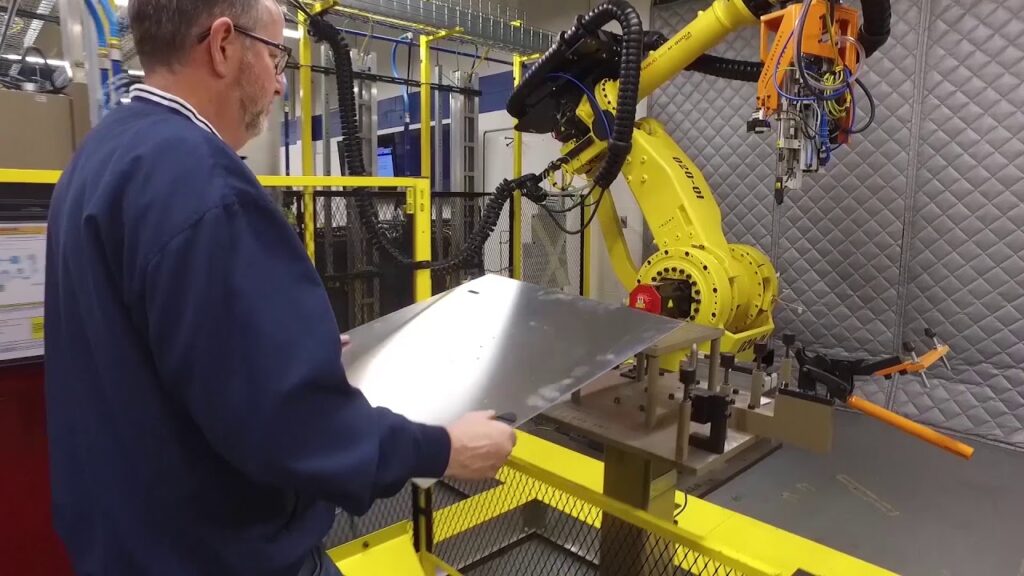The dawn of Industry 4.0 is not about robots eliminating human jobs. Instead, at companies such as Ford, collaborative robots are revolutionizing the manufacturing industry. These Industrial Robots in Manufacturing are changing the way we work and opening up new possibilities for increased productivity and efficiency.
In recent years, there has been a significant shift in the manufacturing landscape. Traditional factories, characterized by rigid assembly lines and repetitive tasks, are being transformed into smart factories equipped with cutting-edge technology. This transformation is driven by the rise of collaborative robots, also known as cobots, which are designed to work alongside humans, enhancing their capabilities and improving overall productivity.
Industrial Robots in Manufacturing have come a long way since their inception. Initially, robots were seen as a threat to human jobs, with the fear that they would completely replace human workers. However, this narrative is slowly changing as companies like Ford are embracing a different approach. They see these robots as team members, working side by side with humans to tackle complex tasks.
The concept of collaboration is at the core of this new approach. Unlike traditional robots, collaborative robots are designed to be safe and interact directly with humans. They can sense the presence of humans and adjust their movements accordingly, ensuring a safe working environment. This eliminates the need for costly and bulky safety barriers, making the integration of these robots seamless.
But what exactly do these Collaborative Robots bring to the manufacturing industry? Well, the possibilities are endless. These robots can assist human workers in various tasks, ranging from repetitive ones to more complex and specialized jobs. For example, in assembly lines, cobots can perform repetitive tasks such as picking and placing objects, freeing up human workers to focus on more cognitive tasks.
Moreover, cobots can also perform tasks that are physically demanding or pose a risk to human workers. This not only reduces the risk of accidents but also ensures consistent and high-quality output. These robots can work non-stop, without getting tired or making errors, resulting in increased productivity and efficiency.
While the introduction of collaborative robots brings tremendous benefits, it also presents new challenges. One of the major challenges is the need for human workers to upskill and adapt to working alongside robots. As cobots become more prevalent in manufacturing environments, workers need to develop new skills to operate, program, and maintain these robots. This calls for proper training programs and educational initiatives to equip the workforce with the necessary skills to thrive in this new era of manufacturing.
Another challenge is the integration of these robots into existing manufacturing systems. Many companies have already invested heavily in their production lines and infrastructure. Integrating cobots into these systems requires careful planning and coordination to ensure a smooth transition. Companies must also be prepared to redefine job roles and restructure their workflows to fully leverage the capabilities of these collaborative robots.
Despite the challenges, the adoption of collaborative robots is steadily increasing. According to a report by the International Federation of Robotics, the sales of these robots in manufacturing increased by 47% in 2020. This rapid growth signifies the recognition of the value and potential of these robots in driving the industry forward.
The rise of collaborative robots in manufacturing is just the beginning of the Industry 4.0 revolution. As technology advances further, we can expect to see even more sophisticated and capable robots entering the manufacturing landscape. These robots will not only collaborate with humans but also with each other, enabling seamless coordination and communication within the production processes.
In conclusion, the dawn of Industry 4.0 is not about robots replacing humans in the manufacturing industry. Instead, it is about embracing collaboration and leveraging the capabilities of Industrial Robots in Manufacturing. Companies like Ford are leading the way, recognizing that these robots are not threats but valuable team members. As we move forward, the integration of collaborative robots will reshape the manufacturing industry, leading to increased productivity, efficiency, and endless possibilities. So let us embrace this new era and work together with these robots to unlock the true potential of Industry 4.0.
Industrial Robot
"The Evolution of Automation: Unveiling the Synergy Between Collaborative and Industrial Robots in Manufacturing"


